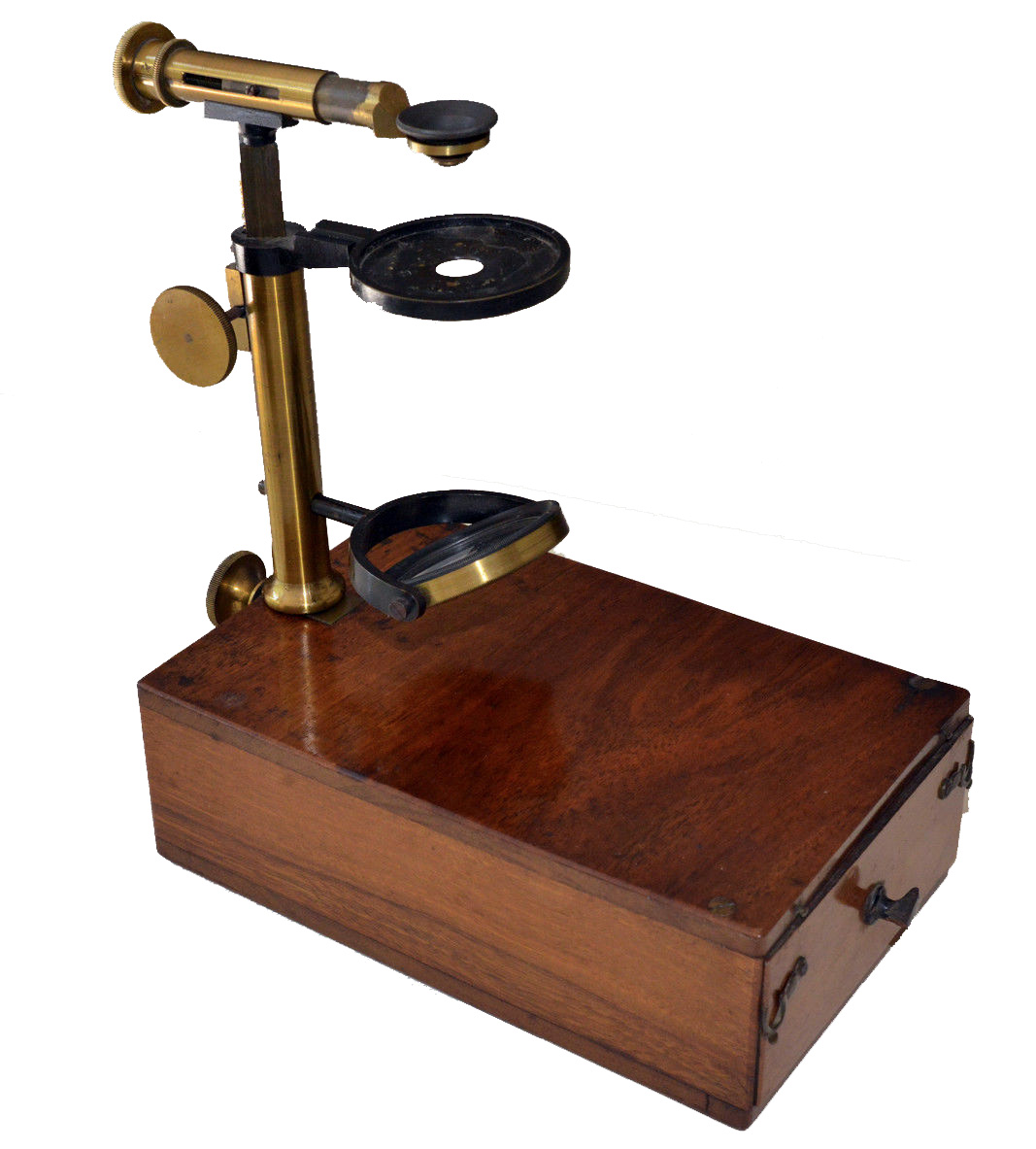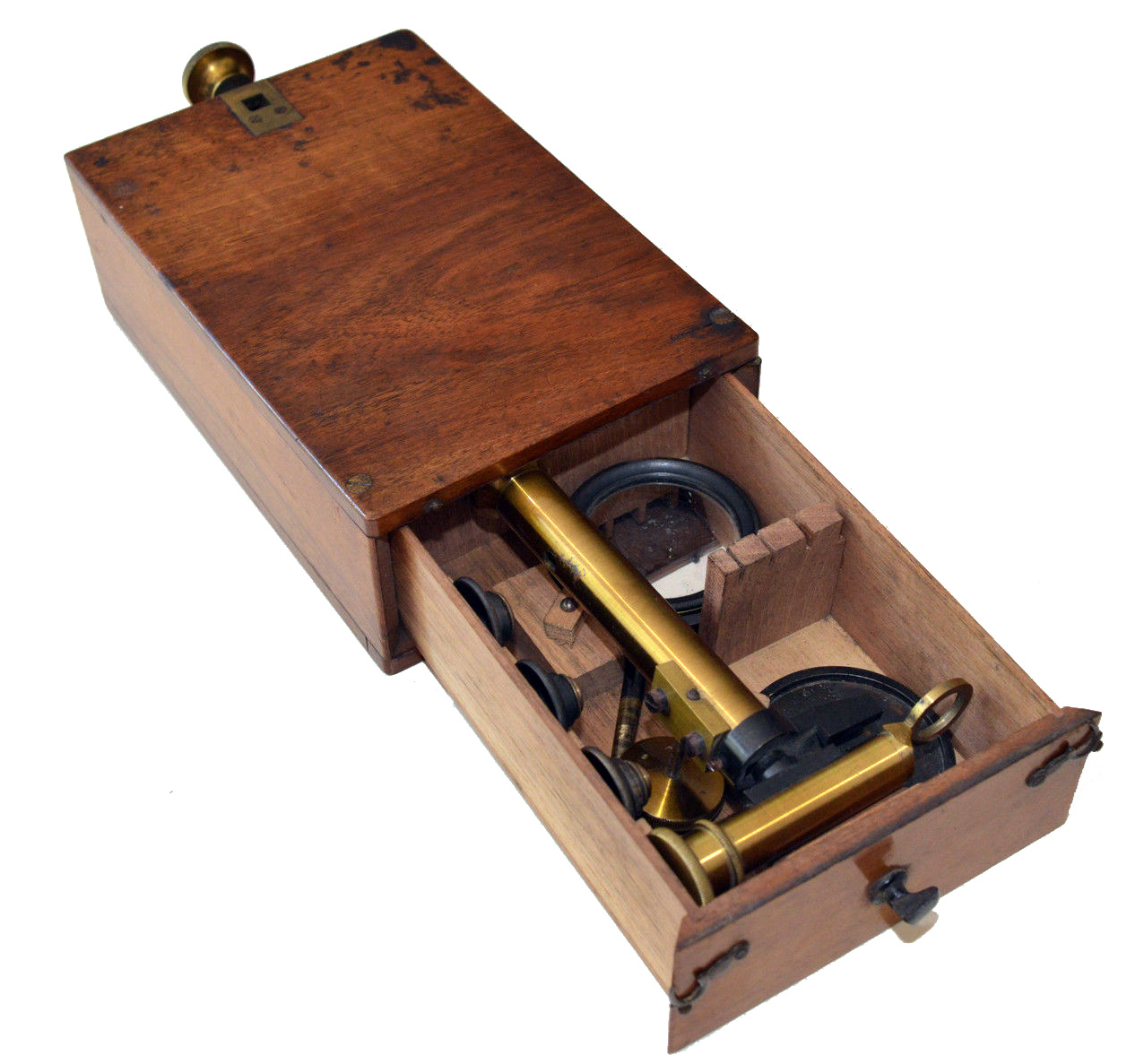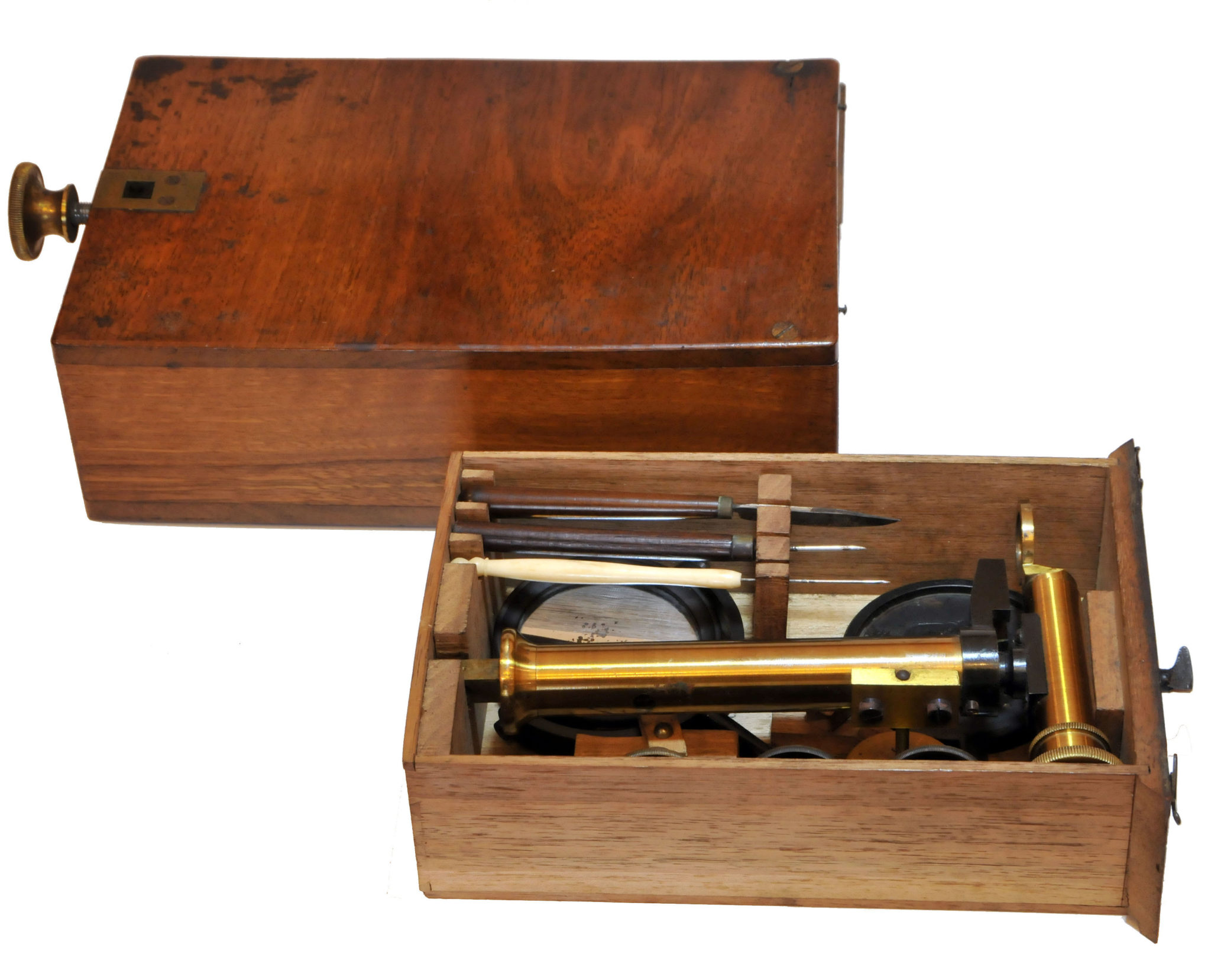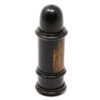Raspail Chemical Microscope, 1835
Stock Number: FG_22043
Sold
Initially, based on the aquatic microscope design of the second half of the 18th century, the microscope is mounted on a mahogany box with a drawer and supports a horizontally adjusting eyepiece, rackwork adjusted swing-arm stage, and a pivoting mirror; the drawer holds two additional eyepieces and a dissecting set of tools.
Circa
1835-1840
Country of manufacture
France
Description
This microscope was produced by the Parisian optician Louis Joseph Deleuil (1795-1862), according to specifications suggested by François-Vincent Raspail (1794–1878), as a modified version of the Cuff/Ellis type aquatic microscope. In the literature, it is said to have tourmaline lenses for high magnifications (to reduce aberrations as tourmaline has an extremely high refractive index). Still, my examination of at least the high magnification in this instrument proved it untrue.
This successful design of a portable single microscope was planned by François-Vincent Raspail (1794–1878, picture below with his microscope), a political reformer and activist and a prominent early 19th-century scientist. Raspail (seen in the photo with this type of microscope) was a founder of microscopical methods in chemistry, a pioneer of organic chemistry and one of the first founders of the cell theory in biology. Raspail also pioneered the staining methods in cell biology using iodine to highlight their different parts. As a politician, Raspail was a devoted republican who was active during the restless periods of the First Empire, the Restoration, the Second Republic and the Second Empire, for which he was sentenced several times to prison.
Ask the Dealer
Dealer information
 Gilgamesh
Gilgamesh
Gilgamesh is a mythological hero from the ancient cultures of West Asia, who embarked on a journey in search of youth and eternal life. Fleaglass Gilgamesh is located in Israel. As an Emeritus Professor of archaeology, I have spent over four decades researching the material culture of the distant past, utilizing the microscope as a powerful research tool. For the past thirty years, I have collected microscopes from the first 300 years of this remarkable instrument's history and have studied the cultural context of their use.
What started as a passion has turned into an obsession, and I now cultivate a nearly unique collection of historical microscopes from West Asia. From time to time, I offer surplus or particularly interesting items from my collection for sale. I am happy to provide free advice to any interested collector. If you would like to receive photos, information, and bibliographic references, or if you wish to discuss the details of the items I have for sale, please feel free to reach out.










